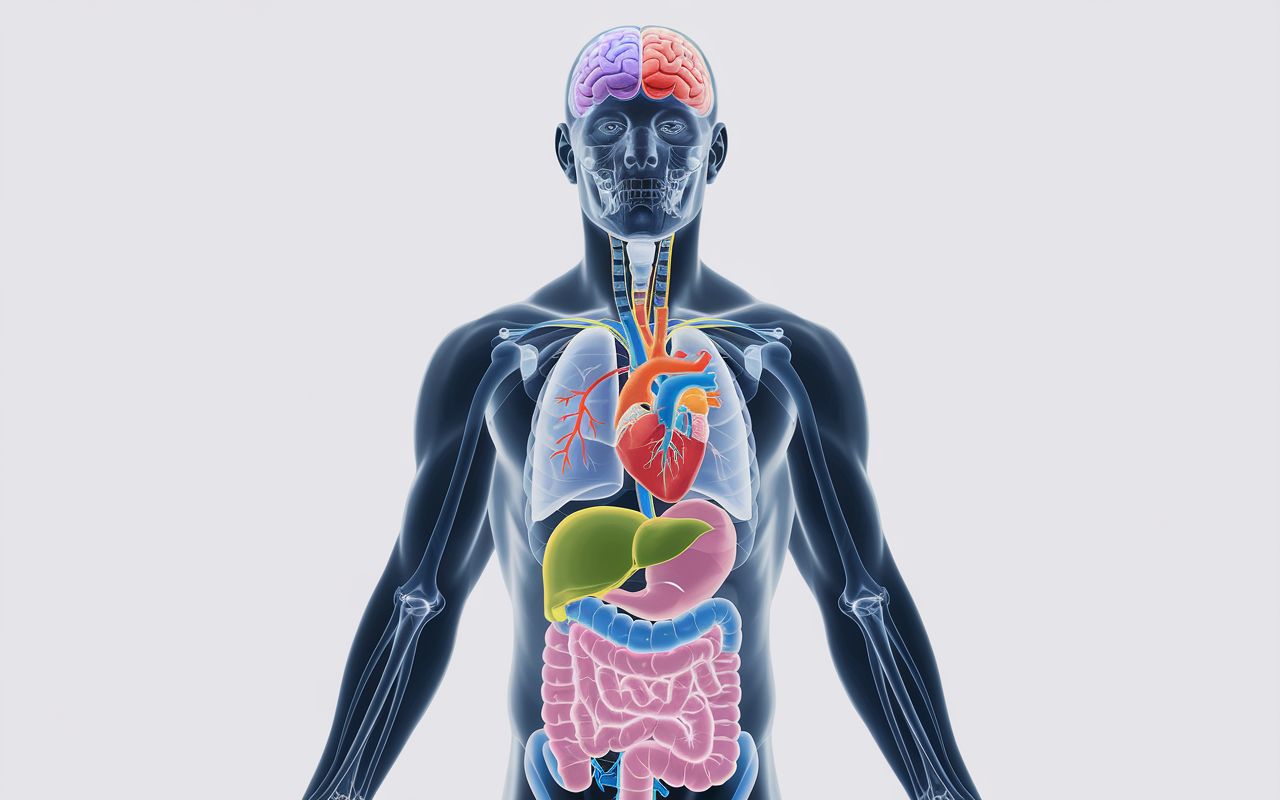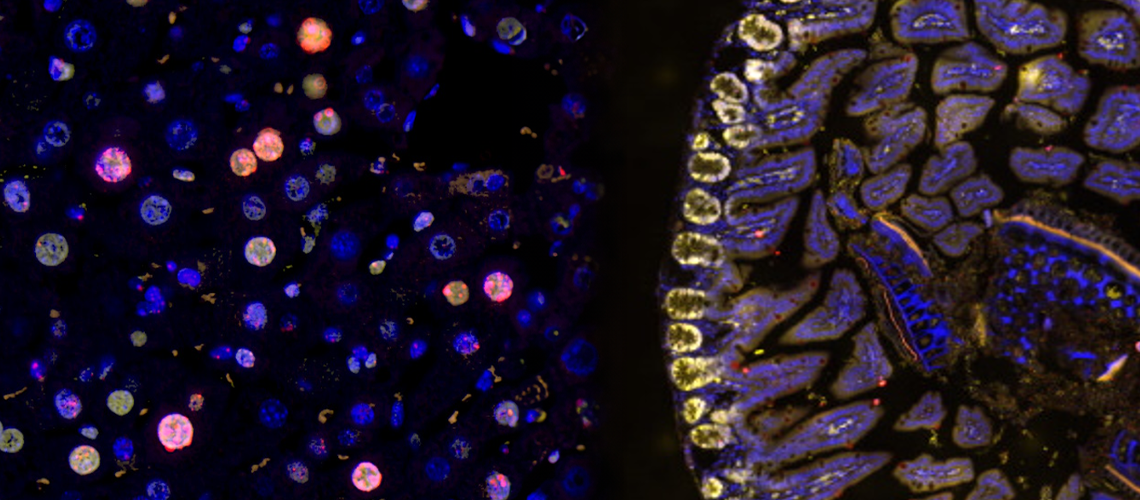Follow us on Google News (click on ☆)

It reveals that damage to non-coding DNA, often hidden, accumulates more in tissues with "low cellular proliferation," such as those constituting the liver or kidneys. Unlike organs that frequently regenerate, this damage remains unnoticed for a long time and prevents cell division. These findings, published in the journal Cell, open avenues for better understanding cellular aging and potentially slowing it down.
Our organs and tissues do not age at the same rate. Aging, marked by an increase in senescent cells—cells incapable of dividing and having lost their functions—affects the liver or kidneys more quickly than the skin or intestines. The mechanisms that contribute to this process are the subject of much debate within the scientific community. While it is widely accepted that damage to genetic material (DNA), which accumulates with age, is a source of aging, the link between these two phenomena remains unclear.
DNA molecules contain coding parts—the genes that encode proteins—and non-coding parts involved in genome regulation or organization mechanisms. Constantly damaged by external and internal factors, the cell possesses DNA repair systems that prevent the accumulation of errors.
Errors located in the coding parts are detected during gene transcription, that is, when they are activated. Errors occurring in the non-coding parts are detected during cell renewal, which requires the creation of a new copy of the genome via the process of DNA replication. However, cell renewal does not occur with the same frequency depending on the type of tissue or organ.

In red on the left, liver cells with damaged DNA. In yellow on the right, proliferating intestinal cells with undamaged DNA, highlighted in yellow.
© UNIGE / UNIBE
Tissues and organs in constant contact with the outside world, and thus more prone to damage, such as the skin or intestines, renew their cells (and therefore replicate their DNA) more frequently—once or twice a week—than internal organs, protected from the outside, such as the liver or kidneys, which do so at most a few times a year.
The liver, an ideal model for studying aging
Thanos Halazonetis's group, a full professor in the Department of Molecular and Cellular Biology at UNIGE's Faculty of Science, studies DNA replication mechanisms. His team, in collaboration with the groups of Professors Stroka and Candinas from Inselspital in Bern and UNIBE, focused on liver cells (hepatocytes) that proliferate little and whose DNA is rarely replicated. The scientists analyzed the potential link between the faster aging of the liver and the lower frequency of DNA replication in its cells.
"Our study model, the mouse liver, is an ideal organ for studying the mechanisms of DNA replication in vivo. Indeed, in adult mammals, hepatocytes no longer proliferate unless there has been partial removal. After performing a two-thirds removal of the liver in young or old mice, we can study replication mechanisms in a young or aging organ, directly in the living organism," explains Professor Deborah Stroka, co-last author of the study.
By mapping for the first time the DNA replication start sites in liver cells regenerating after removal, the scientists discovered that these are always located in non-coding regions. Additionally, it was observed that replication starts were much more efficient in young mice than in older mice.
"These non-coding regions are not subjected to regular error checks. They therefore accumulate damage over time. After removal of the liver in young mice, the damage is still minimal, and DNA replication is possible. However, when the experiment is conducted in older mice, the excessive number of accumulated errors over time triggers an alarm system that prevents DNA replication," explains Giacomo Rossetti, assistant professor in the Department of Molecular and Cellular Biology at UNIGE's Faculty of Science and first author of the study.
This replication block in cells with damaged DNA prevents cell proliferation, leading to the degradation of cellular functions and tissue senescence.
A hope to slow down aging
These observations could help explain why slow-proliferating tissues, like the liver, age faster than fast-proliferating tissues, like the intestine. In cells that have remained dormant for long periods, too many cryptic DNA lesions accumulate in the non-coding regions, which notably contain the replication origins, preventing the initiation of replication. In contrast, in fast-proliferating tissues, little damage accumulates thanks to frequent cell renewals, and the replication origins maintain their effectiveness.
"Our model suggests that by repairing cryptic DNA lesions before replication initiation, certain aspects of aging could potentially be avoided. This is the new working hypothesis on which our efforts will focus," concludes Thanos Halazonetis.